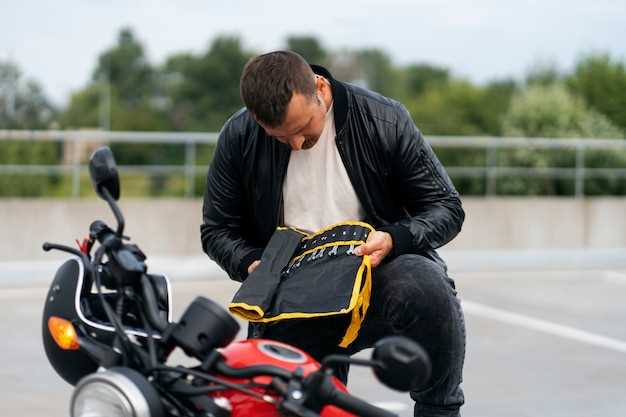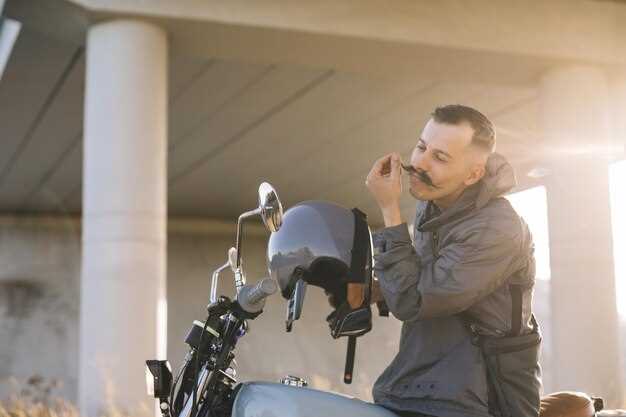

Improving your motorcycle riding skills is essential for both safety and enjoyment on the road. Whether you are a beginner looking to gain confidence or an experienced rider wanting to refine your technique, there are several strategies you can employ. Mastering the art of riding requires practice, understanding your motorcycle, and continually assessing your performance.
One of the first steps to enhancing your riding skills is to familiarize yourself with the mechanics of your bike. Understanding how your motorcycle responds to different inputs allows for better control and smoother rides. Additionally, participating in advanced riding courses can provide valuable insights and techniques that go beyond basic riding. These classes often focus on skills such as cornering, braking, and emergency maneuvers, all key components of proficient riding.
Moreover, the importance of building good habits cannot be overstated. Attention to detail in your riding posture, throttle control, and awareness of your surroundings significantly contribute to overall riding skills. Regularly evaluating and adjusting your approach ensures that you remain a competent and confident motorcyclist, ready to tackle any situation that may arise on the road.
Mastering Cornering Techniques for Better Control
Cornering is one of the most challenging yet rewarding aspects of motorcycle riding. To enhance your skills, it is essential to master the techniques that allow for better control and precision while navigating turns. Start by practicing your body positioning. Leaning your body into the turn while keeping the motorcycle upright helps maintain balance. Proper posture reduces the chance of losing grip and enhances stability.
Next, focus on your entry speed. It is crucial to approach corners at an appropriate speed. Tackling a turn too quickly can lead to a loss of control. Instead, slow down in a straight line before entering the corner. Use the brakes wisely and make gradual adjustments to your speed, allowing for smoother transitions through the turn.
Another key element is the line you take through the corner. Practice selecting an optimal line that consists of an early apex, which allows you to maximize your throttle application as you exit the corner. This technique not only improves speed but also boosts confidence in handling sharp turns.
Additionally, pay attention to your throttle control while cornering. Gradually applying the throttle during the turn helps stabilize the bike and provides better traction. Avoid abrupt throttle changes, as these can lead to unexpected shifts in weight distribution, potentially causing a loss of control.
Finally, always keep your eyes focused on where you want to go. Your gaze should be directed towards the exit of the corner rather than looking down at your front wheel. This habit allows your brain to anticipate the turn, resulting in smoother navigation and better overall control.
Through dedicated practice and attention to these cornering techniques, you will improve your riding skills significantly, making every ride a more enjoyable and controlled experience.
Improving Your Braking Skills in Different Conditions
Braking is a critical skill for motorcycle riders, significantly impacting safety and control. To enhance your braking proficiency, consider the following tips tailored to various conditions:
1. Practice in Dry Conditions
- Choose a safe, open area to practice stopping techniques.
- Gradually apply the front brake, followed by the rear brake, and feel the bike’s response.
- Aim for smooth, controlled stops to build confidence and improve reaction times.
2. Managing Wet Surfaces

- Begin with light braking to avoid locking the wheels and losing traction.
- Practice braking in a straight line before attempting to corner while braking.
- Increase your following distance to allow for longer stopping times.
3. Navigating Gravel and Dirt Roads
- Use more gentle braking techniques to minimize skidding.
- Shift your weight back to maintain stability while braking.
- Practice throttle control to balance braking and acceleration on loose surfaces.
4. Emergency Braking
- Simulate emergency scenarios in a controlled environment.
- Practice maximum braking without losing control of the motorcycle.
- Focus on maintaining straight lines while coming to a complete stop.
5. Adapting to Weather Conditions

- Adjust your braking technique during rainy or icy conditions; use softer pressures.
- Regularly check the condition of your tires, as they play a crucial role in braking effectiveness.
- Stay alert for changes in road conditions, such as puddles or patches of ice.
Consistent practice in diverse environments will enhance your braking skills, making you a more confident and effective rider. Adapting your approach according to the conditions can mitigate risks and improve your overall riding experience.
Practicing Emergency Maneuvers to Increase Safety
Riding a motorcycle comes with its own set of challenges, and one of the most critical aspects of enhancing your skills is the ability to execute emergency maneuvers. Practicing these maneuvers not only boosts your confidence but also improves your overall safety on the road. Familiarity with emergency handling can be the difference between avoiding a dangerous situation and getting into an accident.
One essential maneuver to practice is the emergency stop. This skill allows you to bring your motorcycle to a halt as quickly as possible when faced with an unexpected obstacle. To practice, find a safe, open area and gradually increase your speed before applying both brakes firmly. Focus on maintaining control while feeling the bike’s response, ensuring you don’t lock the wheels, which could lead to a skid.
Another important skill is swerving to avoid an obstacle. This technique requires quick reflexes and precise control. Set up cones or markers in a safe environment, and practice weaving between them at different speeds. Work on shifting your weight and adjusting your throttle to maintain stability while making sharp turns. Regular practice will help you react instinctively when an obstacle appears unexpectedly on the road.
Additionally, practice group riding scenarios where you might encounter sudden challenges. Ride with friends and simulate emergency situations, such as a sudden stop or a vehicle cutting you off. This not only helps to improve your skills but also prepares you for real-world conditions where other drivers may not always be predictable.
Finally, consider taking a motorcycle safety course that includes emergency maneuvers. These specialized classes provide valuable insights and professional guidance, allowing you to refine your skills under expert supervision. Remember, consistent practice in a controlled environment is key to increasing your ability to react safely in emergencies, ultimately safeguarding both you and others on the road.
